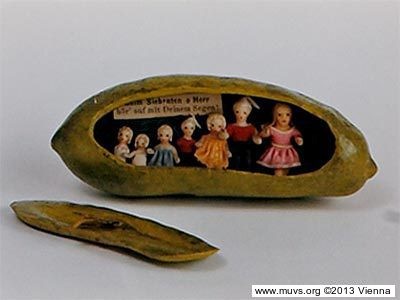‘Natural’ methods of contraception: elephant dung, parsley, hopping
In principle, nature does not want to prevent conception – on the contrary: reproduction and procreation are among nature’s laws. If, despite this, a woman does not wish to get pregnant 12 to 14 times in her life, she must take precautions in good time. ‘No sex’ is guaranteed to be the most effective method!
But maybe nature itself has something to offer after all? (We don’t take any responsibility for success!)
There is crocodile or elephant dung, for example, which used to be introduced into the vagina in the form of small pellets because constituents of these faeces are said to have a spermicidal or at least sperm-inhibiting effect: in around 1850 BC, in Egypt, the so-called ‘Kahun papyri’ came into being, which also contain remedies for women’s maladies. One passage deals with contraception and recommends: ‘For preventing a woman from becoming pregnant. Crocodile dung. Pound it with fermented mucilage…’. Recommendations for the use of animal faeces as a contraceptive can also be found more than 1000 years later in Arabic literature, such as in Avicenna’s Canon of Medicine from the 11th century AD. In this work, it is not crocodile excrement that is recommended but elephant dung. Unfortunately, no statistics are available on the effectiveness of these methods.
The use of lemon juice is also recommended in literature; tradition has it that this was a trick of Casanova’s from the 18th century: a lemon is cut in half and the juice extracted, and the inverted peel is put over the cervix like a cap. Lemon juice contains a weak concentration of citric acid, which inhibits or slows down sperm motility. Vaginal douches with lemon juice can also allegedly prevent fertilisation, namely, at the point when the sperm are still in the vagina and have not already hurried on towards the uterus. One to two tablespoons of lemon juice were used to a quarter litre of water.
Without meddling in matters of faith, we would also like to bring up the topic of ‘prayer’: Just as people implored heaven to bless them with children, there were also aspirations in the other direction, such as votive offerings of the likes of the wax cucumber in our exhibition. Wedding gifts such as these were used to mobilise divine assistance up until the 19th century: ‘Dear Lord, stop your blessings after number seven!’
‘Natural’ methods were also used when the ‘threat’ of a pregnancy was already present. Allusions to this can be found in the following old nursery rhyme, for instance (translated from German):
‘Parsley and chervil grow outside / In our garden / Our (Annie/Liesel) is the bride / The waiting is now all done / Red wine / White wine / Tomorrow is the wedding time.’
In plain language: rosemary, thyme, parsley and chervil were considered contraceptives because they contain strong essential oils. The delicate protein of the egg that breaks loose during ovulation is no match for them, and, so, fertilisation is prevented. Women would be given these plants by their midwives or would grow them themselves in their gardens. Their use has evidently been known about for a long time, because the reference to ‘red wine’ and ‘white wine’ alludes to the time of menstruation and the days thereafter.
Speaking of alcohol: the subject of contraception was already addressed in the famous Ebers Papyrus from the 16th century BC. It offers the advice of drinking a hot beverage made up of sweet beer, celery and oil after the ‘act’ to avoid conceiving.
You can also try ‘sport’: in Roman and Greek antiquity, it was recommended to women that they encourage the sperm to leave the uterus by jumping up and down vigorously after sexual intercourse. Furthermore, the woman was to hold her breath at the moment of ejaculation, immediately crouch down, sneeze vigorously, clean her vagina and drink something cold.
Another ‘natural’ option was to use a sponge or woollen pad that was soaked in an essence made of pomegranate seeds, ginger and other plant roots, olive oil, honey, vinegar, brine, potash alum and various resins and then introduced into the vagina. This would affect the acid–base balance of the vagina and uterus in such a way that the sperm met with unfavourable conditions for uptake. Those who drank a concentrate of copper ore or savin juniper dissolved in water were said to be protected against conceiving for a whole year.
In the 4th century AD, there were also tips for men on how to dodge conception naturally: before intercourse, they were to brush their member with the sap of French Honeysuckle (a sweetvetch from the legume family) or with a mixture of pomegranate juice and vinegar or potash alum.
Sources:
Bernard Asbell, The Pill: A Biography of the Drug That Changed the World, 1995
Norman E. Himes, Medical History of Contraception, 1936
Robert Jütte, Lust ohne Last – Geschichte der Empfängnisverhütung, 2003
Robert Jütte, Abtreibung und Empfängnisverhütung in der Frühen Neuzeit, 2007
Vincent T. van Vilsteren, Rainer-Maria Weiss, 100.000 Jahre Sex. Über Liebe, Fruchtbarkeit und Wollust, accompanying the exhibition of the same name [100,000 Years of Sex: On Love, Fertility and Lust], 2007
Anke Wolf-Graaf, Die verborgene Geschichte der Frauenarbeit, 1983
